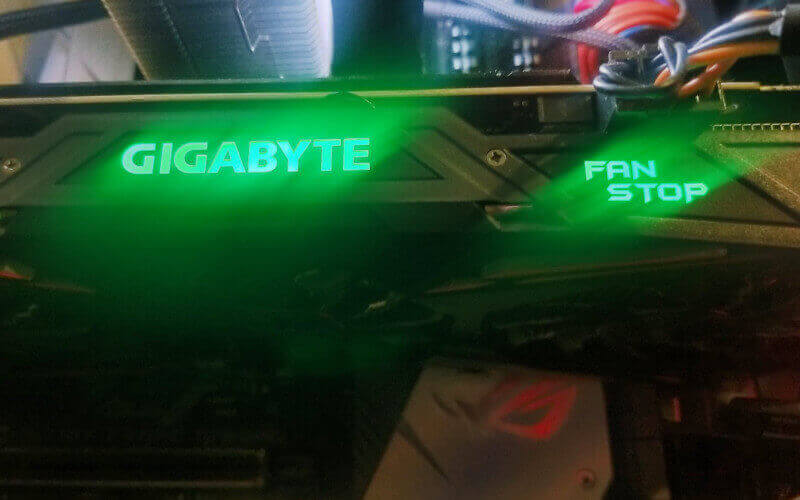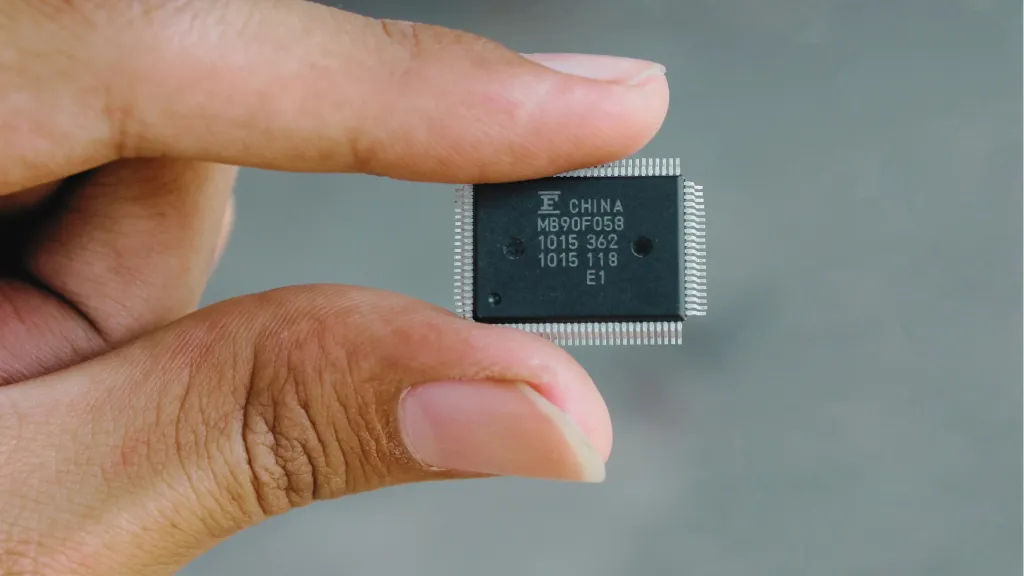If you love gaming or graphic-intensive work like video editing or animation, you might have encountered the terms VRAM and DRAM. These two types of memory play a crucial role in determining the performance of your system, but they aren’t the same thing.
In this article, we’ll explore the difference between VRAM and DRAM, their advantages and disadvantages, and which one you should choose for your system.
Understanding the difference between VRAM and DRAM is essential for anyone looking to build or upgrade their computer. With so many options available, making the right decision can be challenging, but don’t worry. We’ve got you covered.
We’ll dive deep into the technical aspects of VRAM and DRAM and break them down in easy-to-understand terms.
By the end of this article, you’ll better understand these two types of memory and be able to make an informed decision when selecting the right memory for your system.
So, let’s get started.
What is VRAM?
VRAM stands for Video Random Access Memory. It’s a type of memory specifically designed for graphics processing units (GPUs) to store and access video data quickly.
In simpler terms, the memory allows your computer to display high-quality images and videos on your screen.
The main advantage of VRAM over other types of memory is its fast access speed. VRAM is built into the GPU, meaning it doesn’t need to communicate with the CPU (central processing unit) to access data. This results in faster rendering times and smoother video playback.
There are different types of VRAM, including GDDR5, GDDR6, and HBM2. Each type has advantages and disadvantages, depending on the specific use case. For example, GDDR6 is known for its high bandwidth and low power consumption, making it a popular choice for gaming GPUs.
VRAM is a specialized type of memory designed for GPUs to store and access video data quickly. Its fast access speed allows for smoother video playback and faster rendering times.
Types of VRAM
There are three main types of VRAM: Synchronous Graphics RAM (SGRAM), GDDR (Graphics Double Data Rate) RAM, and High Bandwidth Memory (HBM).
- Synchronous Graphics RAM (SGRAM): One of the oldest forms of VRAM, typically found in lower-end graphics cards. It’s called “synchronous” because it is tied to the GPU’s clock speed, making it easier to manage. While SGRAM cannot deliver high-performance graphics, it offers lower power consumption and is relatively inexpensive.
- GDDR (Graphics Double Data Rate) RAM: It is the most common type of VRAM in use today, and it operates similarly to regular DDR memory but with optimizations specific to graphics tasks. GDDR RAM has higher bandwidth and can support higher resolutions, making it ideal for gaming and other GPU-intensive applications.
- High Bandwidth Memory (HBM): HBM is a newer type of VRAM that is faster than GDDR DRAM and requires less power. HBM stacks multiple memory dies on top of one another, allowing more data to be transferred per clock cycle. This provides higher bandwidth and supports faster data transfer rates, making it ideal for advanced gaming and other demanding graphical applications.
SGRAM is ideal for low-end graphics cards, while GDDR DRAM is suitable for most mid-range to high-end graphics cards. HBM is the fastest and most expensive option, ideal for gamers and professionals who require high-end performance.
What is DRAM?
DRAM stands for Dynamic Random Access Memory. Unlike VRAM, DRAM is a general-purpose memory used by the CPU to store data temporarily.
DRAM is known for its high capacity and low cost compared to other types of memory. It’s also designed to be flexible and can be used in various applications.
For example, it’s commonly used in desktop and laptop computers, smartphones, and other electronic devices.
One of the key advantages of DRAM is its fast read and write speeds, which makes it ideal for applications that require frequent data access. However, it’s important to note that DRAM is a volatile memory requiring constant power to retain data.
This contrasts with non-volatile memory like solid-state drives (SSDs), which can retain data even when the power is turned off.
There are different types of DRAM, including DDR4, DDR5, and LPDDR4X. Each type has advantages and disadvantages, depending on the specific use case.
For example, DDR4 is known for its high speed and low power consumption, making it a popular choice for desktop and laptop computers.
DRAM is a general-purpose memory used by the CPU to store data temporarily. Its fast read and write speeds make it ideal for applications that require frequent data access.
Related: Does RAM Affect FPS?
Types of DRAM
- Synchronous DRAM (SDRAM): It is a type of DRAM that synchronizes its operations with the CPU’s clock speed. SDRAM is available at various speeds, such as PC66, PC100, and PC133. SDRAM is commonly found in older computer systems and is not as fast or power-efficient as newer memory types.
- Double Data Rate Synchronous Dynamic Random Access Memory (DDR SDRAM): It is a type of volatile memory used in modern computers and electronic devices. DDR SDRAM transfers data twice per clock cycle, doubling the data transfer rate compared to SDRAM. This means that DDR SDRAM can transfer data at twice the speed of SDRAM with the same clock speed.
Differences between VRAM and DRAM
Now that we have a basic understanding of VRAM and DRAM, let’s dive into the differences between the two.
One of the key differences between VRAM and DRAM is their intended use. VRAM is designed explicitly for GPUs to store and access video data quickly, while DRAM is a general-purpose memory used by the CPU to store data temporarily.
Another difference is their physical location. VRAM is built directly into the GPU, meaning it doesn’t need to communicate with the CPU to access data.
DRAM, however, is typically located on a separate module connected to the motherboard. This means that it needs to communicate with the CPU to access data, which can result in slightly slower access times compared to VRAM.
Regarding performance, VRAM generally has higher bandwidth and faster access times than DRAM. This makes it ideal for applications that require high-quality graphics, such as gaming or video editing. However, VRAM also tends to be more expensive compared to DRAM.
DRAM, conversely, has a higher capacity and is more cost-effective than VRAM. This makes it ideal for general-purpose computing tasks like web browsing or word processing.
However, it may not be suitable for applications that require high-quality graphics, as it may not be able to keep up with the demands of the GPU.
The main differences between VRAM and DRAM are their intended use, physical location, and performance characteristics. VRAM is designed for high-quality graphics processing and has faster access times but it is more expensive.
DRAM is a more cost-effective general-purpose memory with higher capacity but may not be suitable for high-quality graphics processing.
In simpler terms, VRAM cards can display higher screen refresh rates at high pixel addressabilities and color depths. On the other hand, DRAM cards do not possess this capability. While some VRAM cards may perform slightly better than their DRAM counterparts at lower addressabilities, the difference is insignificant for most users.
However, if you use your monitor at higher pixel addressabilities and color depths, VRAM-based cards are likely to perform better than DRAM cards. Generally, VRAM cards excel compared to DRAM cards at pixel addressabilities and color depths greater than or equal to 800×600 x 24-bit color (16.7 M colors) and 1024×768 x 16-bit color (64k colors).
Choosing the Right Memory for Your System
So, how do you choose the right memory for your system? The answer depends on your specific needs and use case.
If you’re a gamer or video editor, you’ll want to prioritize VRAM for its high bandwidth and fast access times. This will help ensure your system can handle demanding graphics processing tasks without lagging or stuttering. However, remember that VRAM can be more expensive than DRAM.
If you’re a general user who mainly uses their computer for web browsing, email, and other basic tasks, then DRAM is likely sufficient for your needs. It’s more cost-effective and has a higher capacity than VRAM, making it ideal for general-purpose computing tasks.
When choosing memory for your system, it’s also important to consider compatibility with your CPU and motherboard. Check your system’s specifications to ensure that the memory you choose is compatible.
Finally, it’s worth noting that there are different types of memory, such as DDR4, DDR5, GDDR5, and GDDR6. Each type has advantages and disadvantages, depending on the specific use case. It’s worth researching to determine which memory type best suits your needs.
Choosing the right memory for your system depends on your needs and use case. If you’re a gamer or video editor, prioritize VRAM for its high bandwidth and fast access times.
For general-purpose computing tasks, DRAM is likely sufficient. Don’t forget to consider compatibility with your CPU and motherboard and research the different types of memory available.
Conclusion
VRAM and DRAM are two types of memory that serve different purposes in a computer system. VRAM is designed for graphics-intensive tasks, offering faster access times and higher bandwidth. At the same time, DRAM is a more cost-effective general-purpose memory with a higher capacity.
When choosing memory for your system, it’s important to consider your needs and use case. VRAM is likely the better choice for gamers or video editors, while general users may find DRAM sufficient for their needs.
Compatibility with your CPU and motherboard is also essential, as well as considering the different types of memory available.
Understanding the differences between VRAM and DRAM can help you make an informed decision when choosing memory for your computer system. So, take some time to consider your needs, do your research, and make the choice that’s best for you.






